The Salted Land
PeriBlog XXIII: Dead Sea, Israel
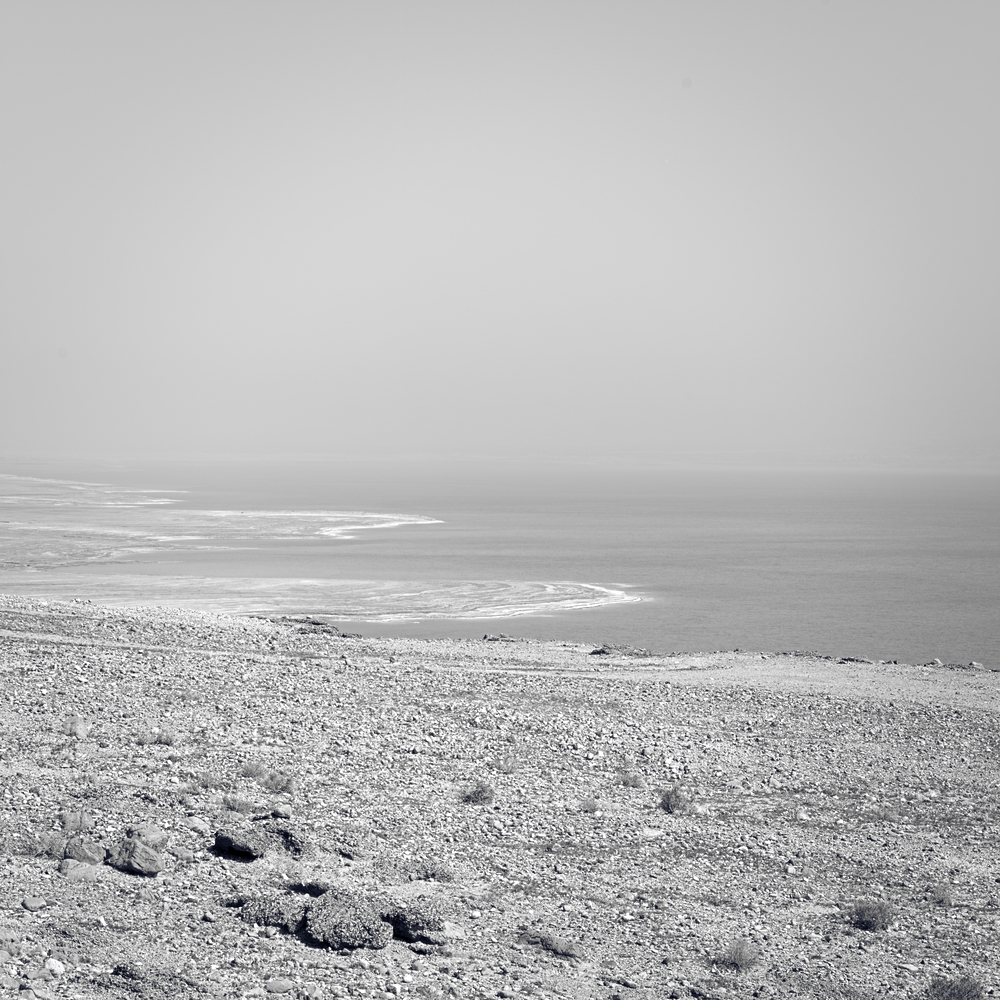
The Dead Sea
But Lot’s wife looked back, and she became a pillar of salt. - Genesis 19:26
The Jordan Rift Valley is deep gash, carved in the earth, a rip produced when two geologic plates—the Arabian and African—pulled apart. Dividing the high, cool mountains of Israel and the West Bank from the arid slopes of Jordan, the great valley descends to a depth of 422 meters below sea level, the lowest point on earth.
The Jordan River trickles through the bottom of this natural rift, flowing south from Lebanon to terminate in the Dead Sea. Because the sea has no outlet, the minerals and salt washed down from the surrounding mountains are stranded in the evaporating water. The Dead Sea is a gigantic salt pan, leaving the Jordan Rift Valley a land of salt.
Where Jesus was Baptized
Then Jesus came from Galilee to the Jordan to be baptized by John. - Matt. 3:13
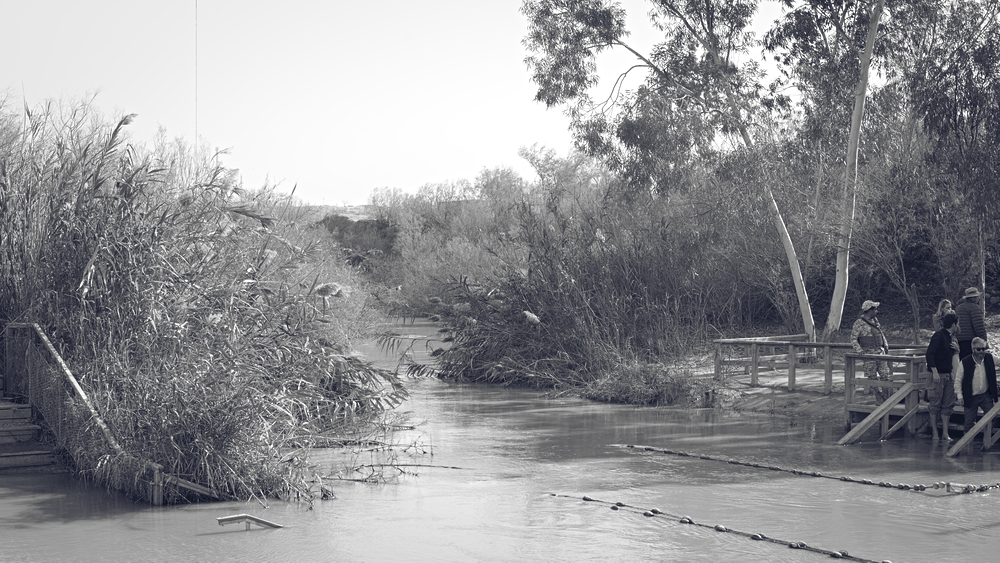
The Jordan River
According to the evangelist, Jesus began his mission by seeking baptism in the Jordan River. The Bible does not specify a precise location, but tradition has filled in the gap. East of the city of Jericho, one finds a small complex—complete with changing rooms—and a large, tour bus-choked parking lot. There can be no doubt that this must be the spot.
On the opposite bank of the river, one heaved stone away, the Jordanians have built a competing facility. Soldiers on both shores of the flowing stream monitor the visitors, ensuring that no one tries to defect.
The muddy river washes the roots of reed tangles and bulrush clumps. It doesn’t look inviting, but that doesn’t deter those who have traveled from distant lands to emulate Christ’s baptism.

A church group approaches the sacred spot
As I watch, Korean acolytes descend into the water, wearing thin white robes over bathing suits. A woman follows her pastor into the river, leans back into his arms, and is immersed, once, twice, thrice.

On the edge of an important moment
It should probably come as no surprise, but this area is popular with religious foundations. By my count, there are twelve churches and monasteries arrayed along the river, no more than a kilometer from the site. The Syrians, Copts, and Russians maintain monasteries here, and even the Lutherans have a church on the Jordan shore. Gold-plated onion domes reflect the morning sun, bells announce the advancing hours.
Surely this must be the place.
The Dead Sea
The river continues south and after a couple of kilometers, flows into the stagnant waters of the Dead Sea. Climate change and water management policies have throttled the water flow. The Dead Sea has shrunk by fifty percent over the past ninety years, and today only covers an area of 234 square miles.
As noted above, the Jordan River collects salt and other minerals, washed down the slopes of of the Jordan Rift, and carries them into the Dead Sea. Since the sea has no natural outlet, these chemicals are left behind as the water evaporates, creating a hypersaline environment. The Dead Sea is nine times saltier than the Pacific Ocean. Visitors who come to float on the surface are warned not to drink the water, or allow it to get into their eyes. It is a toxic brew, one that destroys all plant and animal life.

Abandoned British nightclub
Just west of the mouth of the Jordan River, near the West Bank Salt Company, a graffiti-covered shell of a concrete building looks over the distant waters of the Dead Sea. Once a waterfront establishment, this empty shell served as a British nightclub in the early decades of the twentieth century. Soldiers and their dates, officers and their wives, gathered in this crescent moon-shaped building and danced on the shores of the great sea.

View through a broken wall
It is a relic from the days before the sun set on the British empire, a political institution that, like the Dead Sea, stands considerably reduced.
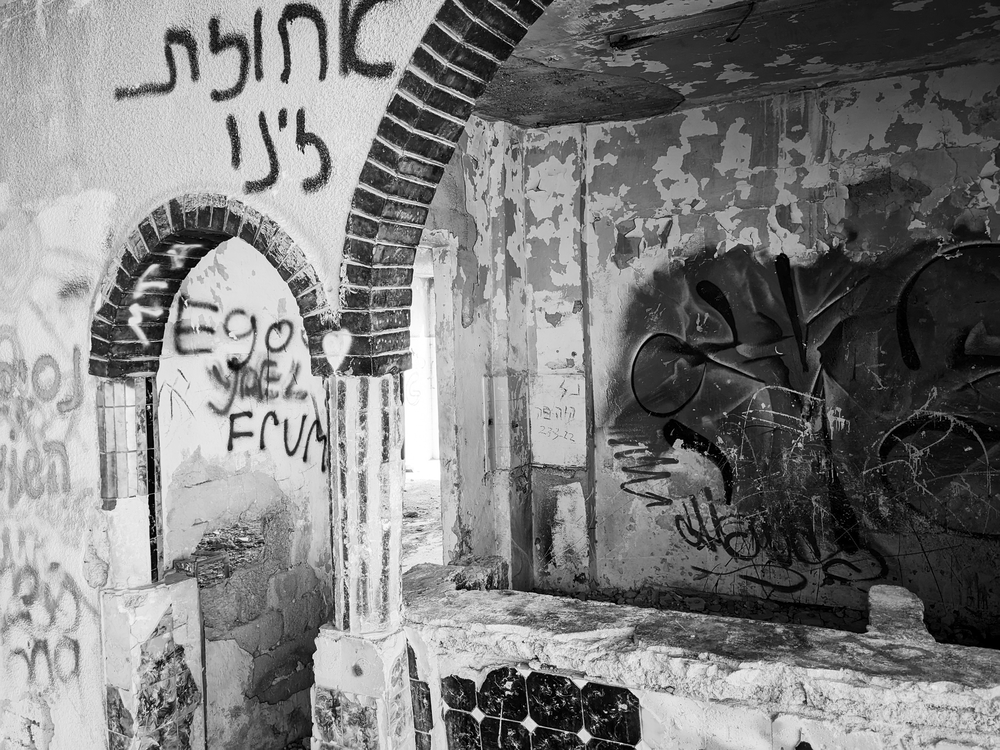
Faded glory
Into the South
Our road continues south, past Qumran (about which I have already written—see this article) and Masada (about which I plan to write—keep watching this space). Tacky beach resorts appear at infrequent intervals, but for the most part this is an empty, salt-drenched world, baked beneath an unforgiving sun and desiccated by the wind.
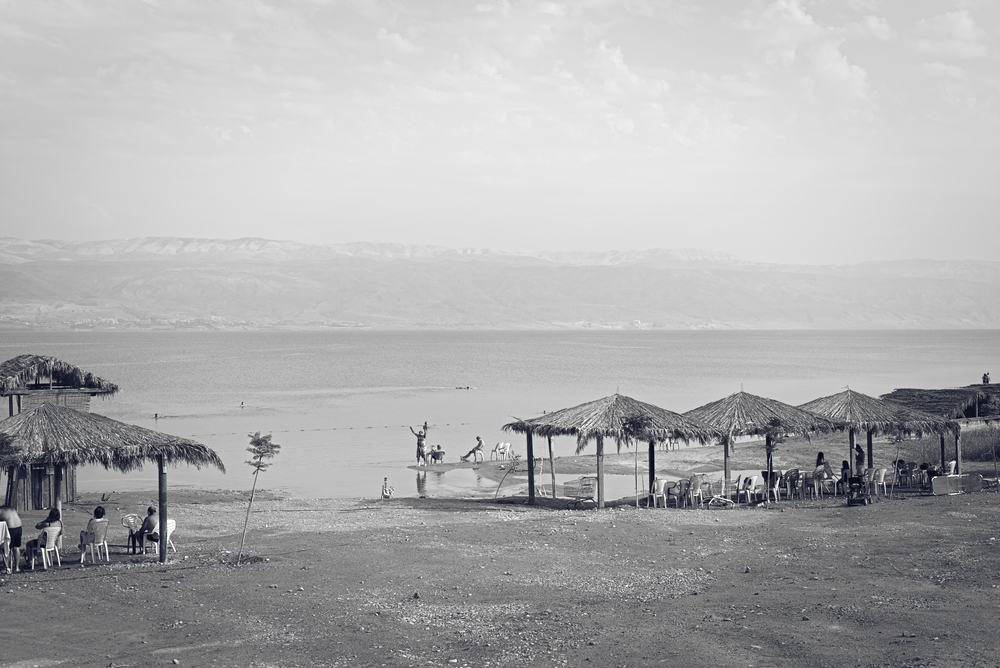
Bathers at the edge of the Dead Sea
Near the lower end of the Dead Sea, we reach the famous site alluded to in the introduction to this report: Sodom and Gomorrah. According to Genesis, it was here, along the shores of the Dead Sea, that Lot’s wife cast her eyes back in longing, reluctant to leave her home and neighbors behind.
God levied his punishment: the disobedient woman was turned into a pillar of salt.
A solitary prominence stands crowns the western mountains that push up to the shores of the Dead Sea. This, according to tradition, is Lot’s wife.

Lot’s wife
In fact, the entire mountain is made of salt. Because the Dead Sea is so saturated with salt, crystals precipitate out of the water and, as layers form, begin to push the land upward. The western rim of mountains—which at first glance appears to be stone and sand—is actually salt. You can break off a piece and taste it or take it home for your salt shaker.
Large white mushrooms of salt grow out of the Dead Sea and spread across the southern waters. A similar process occurs along the shore, where salt blossoms at water’s edge.
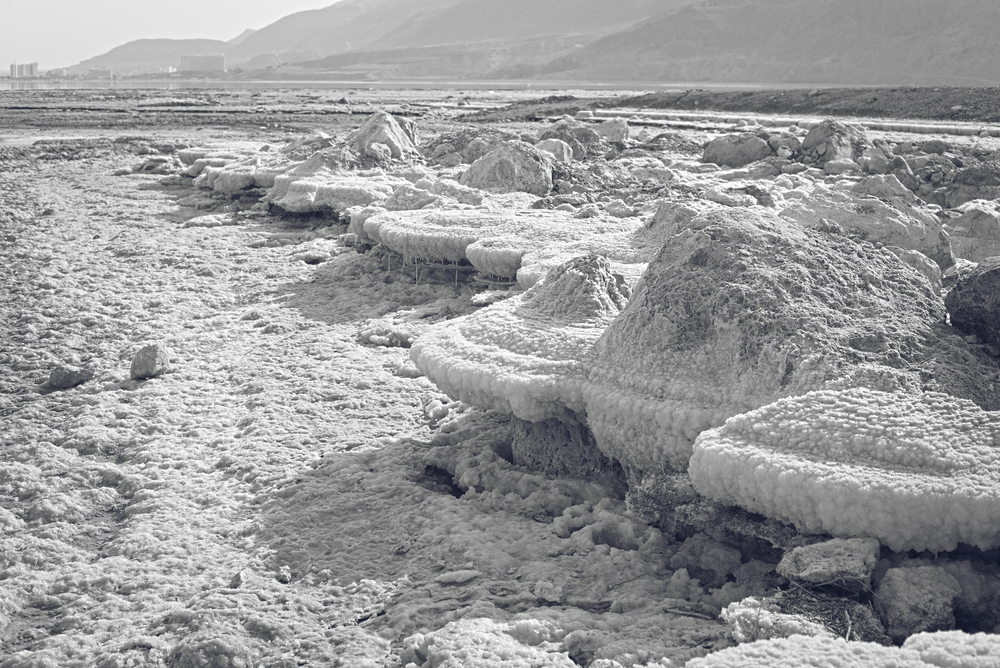
Salt crystallizing along the shoreline
Given enough time, these layers would grow, push up, and form new mountains. Of course, with the Dead Sea receding, their development is inhibited and we probably won’t see new ranges forming.
It sounds a bit odd to say that the Dead Sea is dying, but in fact it is. This inhospitable region becomes less every year. Jordan, Israel, and the Palestinian Authority played with a plan to pump water from Red Sea to supplement the flow from the Jordan River, but this project was abandoned in 2021, scuppered by environmental and political concerns.
Will the Dead Sea survive its current crisis? Will it dwindle until it becomes the Dead Pond?
Only time will tell.
If you are enjoying this series, why not subscribe to Richard's monthly newsletter, What's New in Old News? The Peripatetic Historian is on the road, roaming the world and compiling fresh adventures. Don't miss out. Click here to join the legions of above-average readers who have already subscribed.